hey friend!
I'm Martina.
I provide practical, time-saving strategies that actually work—so you can engage your students, teach effectively, and reclaim your time from the exhausting planning-grading cycle.
Browse Our ELA Resources
Guided Reading and Small Groups in Middle School PART III: ELA Curriculum Lessons and Novel Units
If you’ve ever wondered how to fit guided reading and small groups alongside your ELA curriculum and novel studies—this post is for you.
This is Part Three in my three-part series on how I implemented guided reading and small groups in my middle school classroom.
Catch up on the rest of the series here:
1️⃣ [Part I: Why Guided Reading in Middle School Matters]
2️⃣ [Part II: Student Routines, Daily 5, and More]
3️⃣ Part III: Small Groups Alongside Curriculum and Whole Group (you’re here!)
📥 Want a head start? Click here to get my Middle School Guided Reading Recording Sheets sent straight to your inbox. You’ll also get access to my free Small Group Toolkit and exclusive teaching ideas.
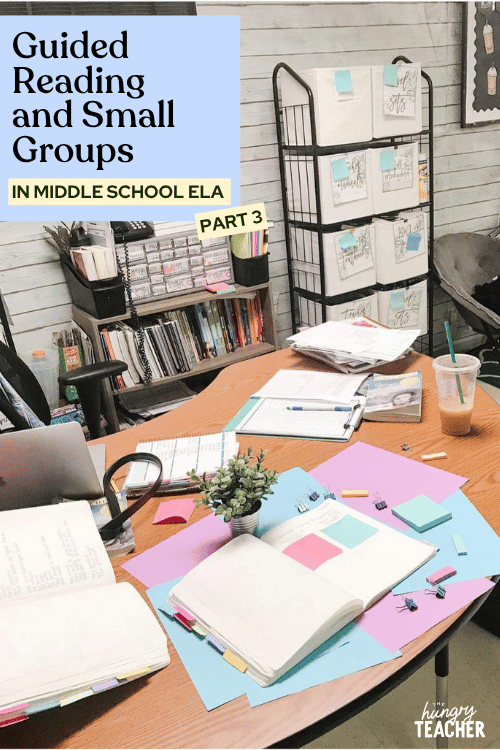
How I Fit Small Groups Into My ELA Curriculum
In my previous posts, I shared how I structure small groups and what the rest of the class does during that time. But I still get tons of questions about how I fit it all in—especially when I’m also teaching a core ELA curriculum and novels.
Here’s how I made it work.
My ELA Schedule
10 min: ELA Bell Ringer
30 min: Core Curriculum Lesson (Collections)
20 min: Round 1 – Guided Reading + Daily 5
25 min: Novel Lesson (Reading; 10 min., Socratic Seminar; 7 min., Reading Response; 8 min.)
20 min: Round 2 – Guided Reading + Daily 5
Breaking up my ELA block like this keeps students engaged and gives me time to meet with multiple groups while still teaching my core lessons.
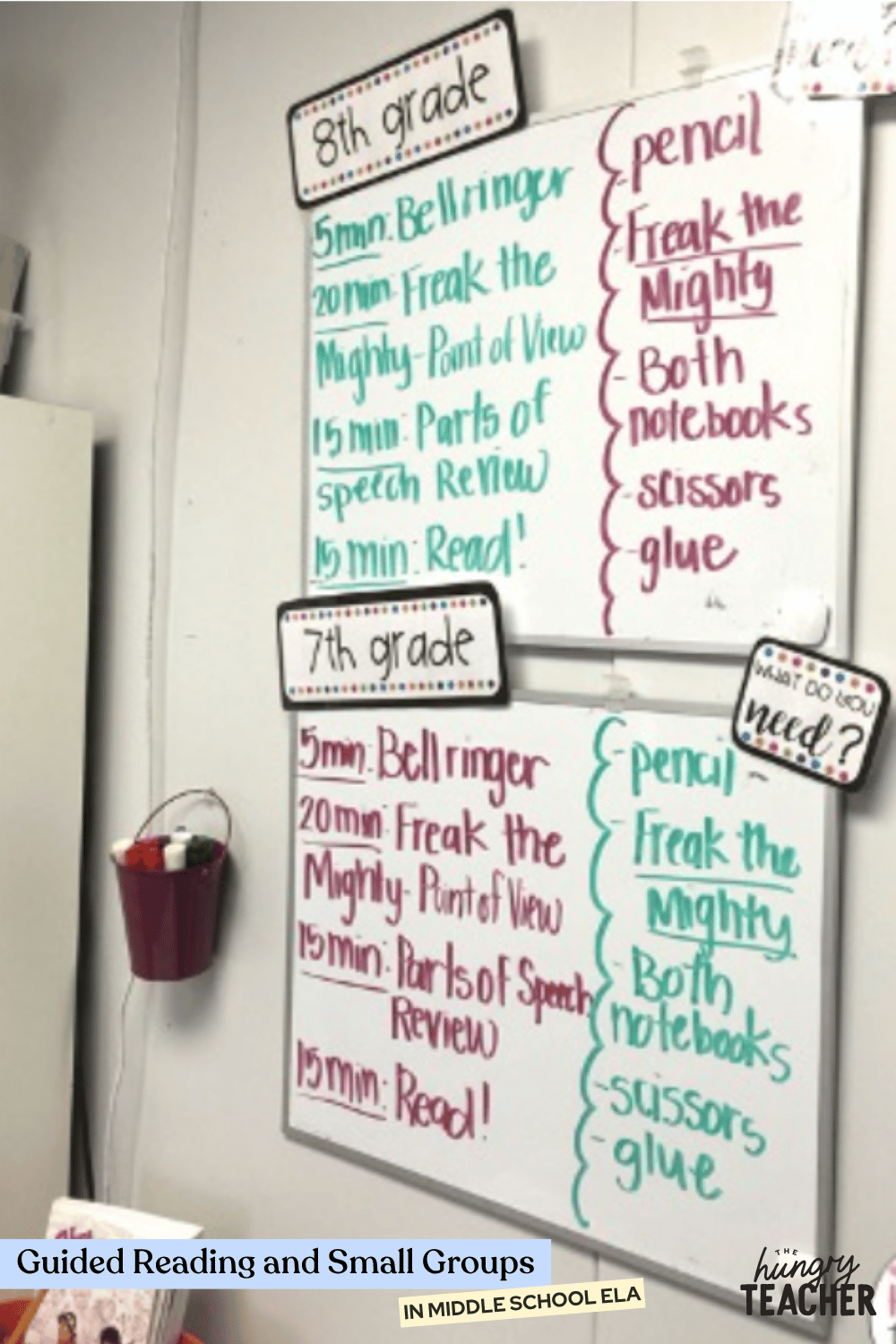
Why I Structure My ELA Block This Way
Sixth graders are no better inclined to sit for extensive amounts of time than any other grade. I wish my ELA curriculum lessons were even shorter sometimes, but in general, I work hard to keep them engaged and moving when I can.
Using a modified Daily 5 approach helps me balance:
- Direct instruction (curriculum + standards)
- Small group intervention and enrichment
- Student independence and choice
By splitting up whole-group instruction and workshop time, I can keep lessons short, movement frequent, and engagement high.
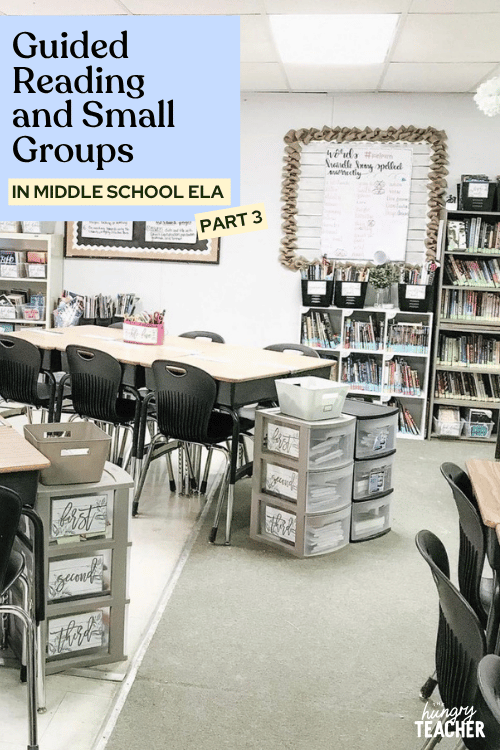
ELA Bell Ringers: The Routine That Changed Everything
I’ve said it before, but my ELA Bell Ringers saved my sanity. Here is a blog post all about how they changed my life.
They give structure to the start of every class and help transition students into learning mode—without chaos or wasted minutes.
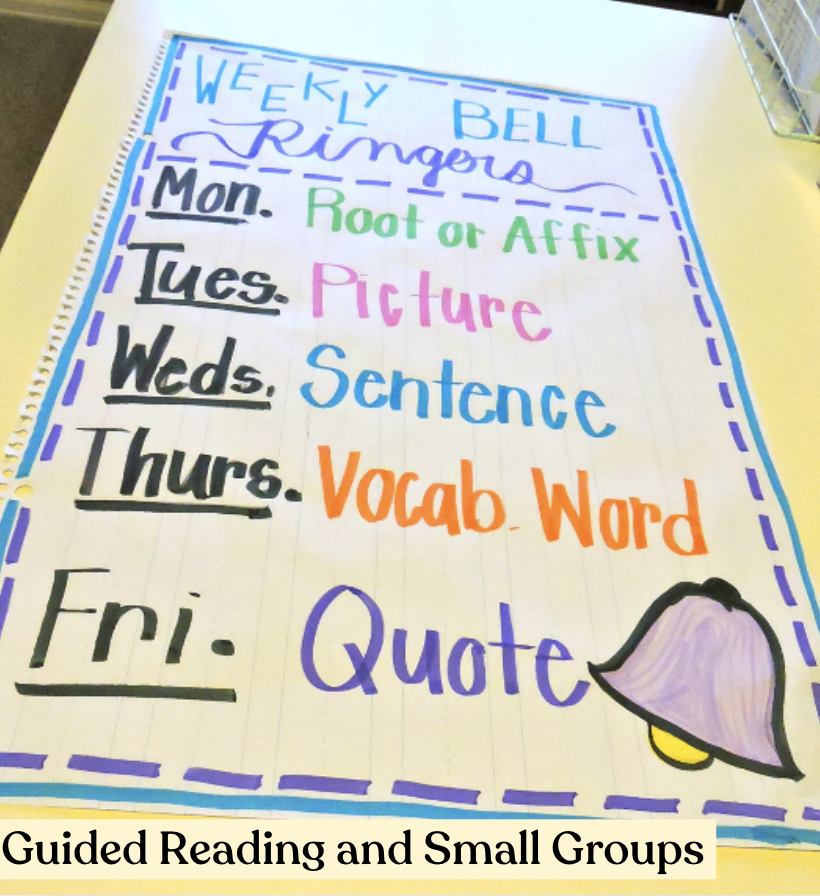
They’re simple, consistent, and actually engaging. My routines and procedures blog post talks more about bell ringers, but you can also grab three free weeks here:
- [5th–6th Grade Bell Ringers – 3 Free Weeks]
- [Middle School Volume One – 3 Free Weeks]
- [Middle School Volume Two – 3 Free Weeks]
- [Roots and Affixes – 3 Free Weeks]
Once you find the version that fits your classroom, you can rotate them each quarter or use one set all year long.

Teaching My Core Curriculum Alongside Small Groups
I’ve taught multiple curricula over the years, but this schedule is what worked best when I used Collections for sixth-grade ELA.
Day One
- Review the performance task and unit vocabulary from the Collection curriculum. We talk about what they will be expected to do at the end (usually a writing analysis, media presentation, group presentation, or research/argumentative paper)
- Watch a short, engaging intro video (like a tsunami clip for our Disasters unit).
- Post vocabulary on chart paper and reference it all unit long.
- The chart paper stays up for the whole Collection. The vocabulary at the top applies to the entire Collection. The multicolored ones at the bottom are from our stories, and we define those in our reading notebooks.

Day Two
- Introduce story-specific vocabulary using my vocabulary organizer (syllables, definitions, and illustrations).
- We use the organizational structure below and write, define, syllabify, and illustrate each word in the story before we read it. They end up looking like the image to the left, and we reference them throughout the whole story. They also always ace their vocabulary tests.
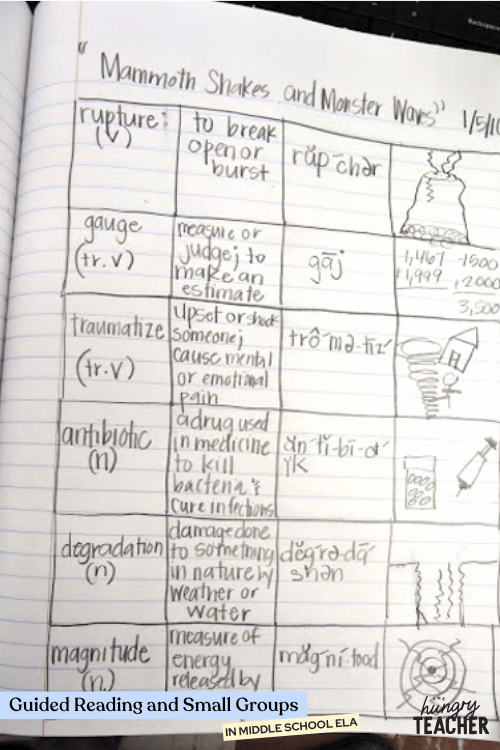
Day Three
- Introduce the Demonstration of Learning (essential question). I tell the students what to look for or think about while we are reading.
- For example: What was the cause and three effects, using textual evidence, of the tsunami in the story?
- I used to hate writing them on the board, but now I see the benefits. I mostly just have to change my Demonstration of Learning each day. These are included in my ELA curriculum.
- Play the story audio version and pause for vocabulary and text evidence discussions.
- This gives my voice a break and allows me to read teacher notes while students listen.
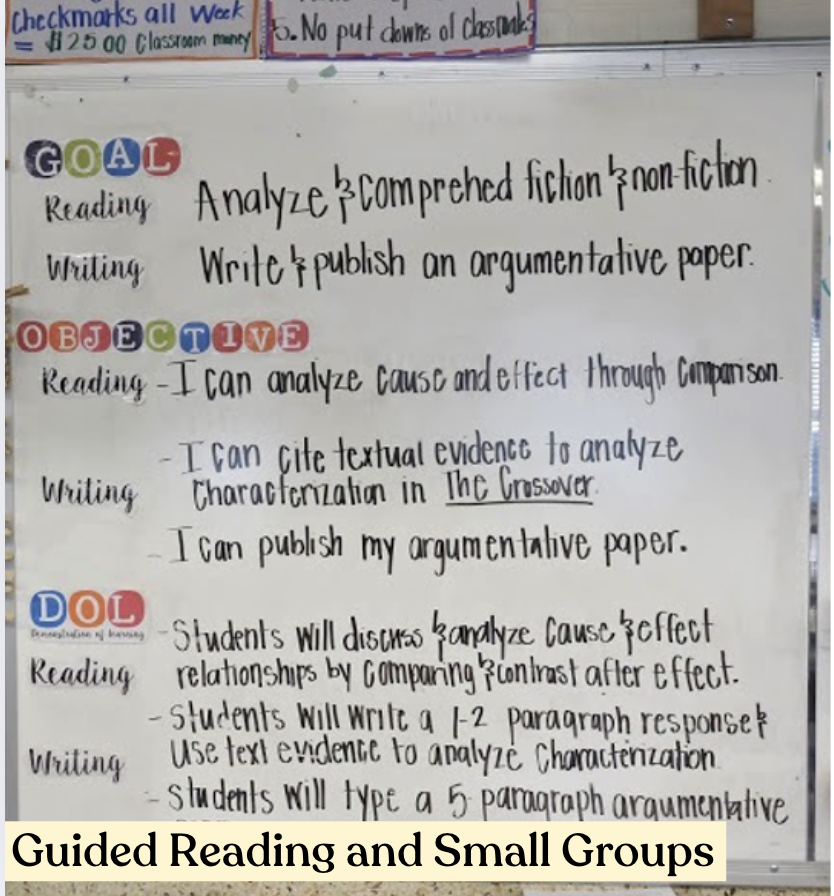
Days Four–Five
Demonstration of Learning Socratic Seminar: Basically, we have a class discussion about the questions, I chart their responses on the board (example here), and then students write their answers in their notebooks.
- Review demonstration of Learning and Essential Questions
- Continue listening to the story, pausing for mini discussions and analysis.
- It typically takes me 3-4 days to finish reading each story.
- Socratic Seminar
- Hold a Socratic Seminar where students share responses, and I chart their thinking on the board.
- Students use the notes to write their own responses afterward.
- The board is to help students write strong responses by utilizing each other’s thinking. It’s basically a BIG collaborative discussion. I LOVE the Socratic Seminar and use it for everything.
- Analyzing the text questions: There are typically 5 questions at the end that we discuss and or write/type about.
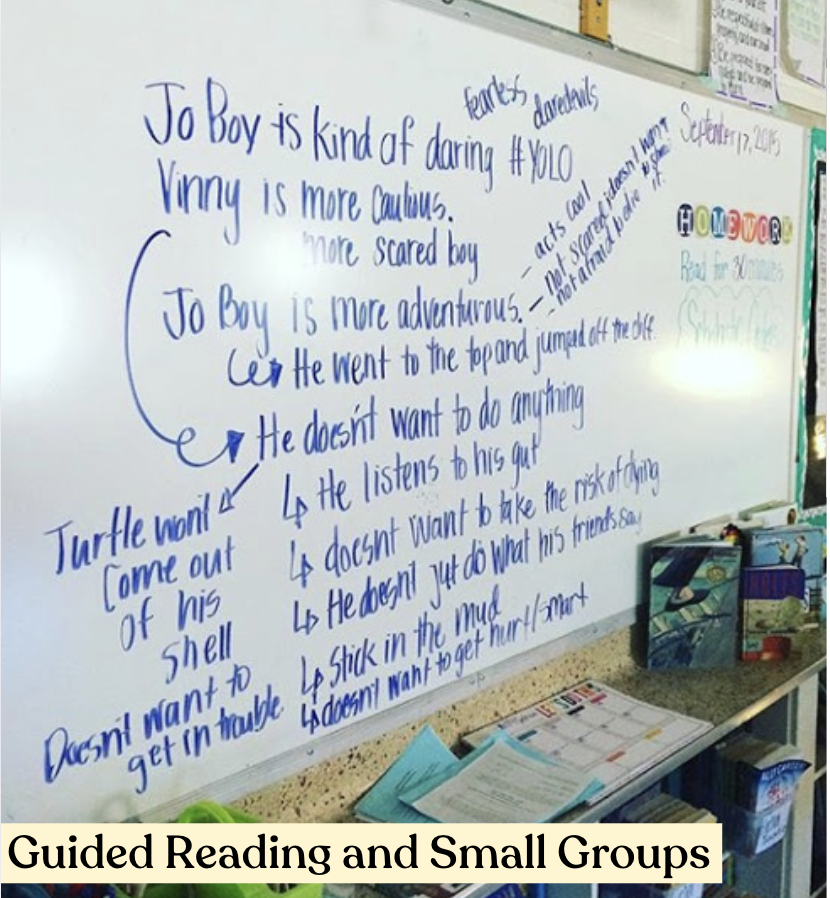
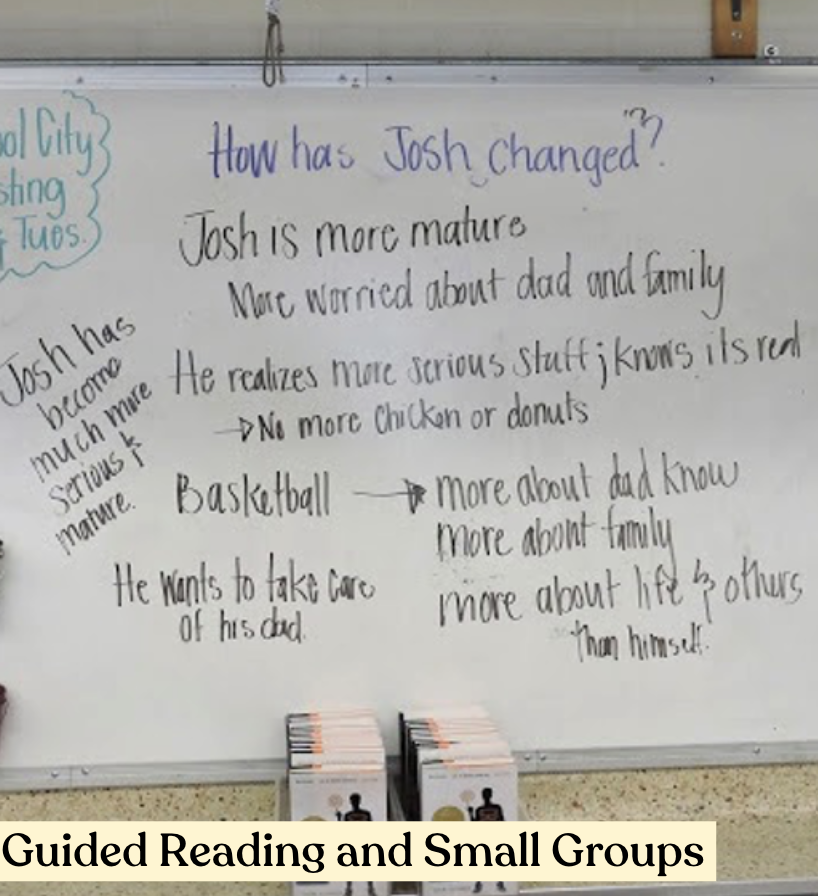
Day Six
- Comprehension and vocabulary test. Most of my students do well on these because we work on the story and vocabulary for 3-4 days.
Day Seven
- Performance task (usually a writing analysis, research paper, or group presentation).
Then we start the process again with the following story—sometimes shorter, sometimes longer, depending on the text (i.e., poems, teachable moments, shorter/longer stories, and more challenging performance tasks).
Why Socratic Seminars Are a Game-Changer
Socratic Seminars are hands-down one of my favorite parts of teaching.
They give every student a voice and help them build deeper understanding through peer discussion. I use them for:
- Text analysis
- Essential questions
- Novel studies
- Even writing prompts
Students learn how to think out loud, cite evidence, and respond thoughtfully to one another—all while I guide and take notes.
If you want to learn more about the Socrati Seminar, I have a variety of blog posts all about it.
How I Incorporate Novel Studies
If you’ve followed me for a while, you know novels are my love language. Even when I have to teach a core curriculum, I always make room for novels as my second lesson of the day.
Here’s what a typical Novel Study Lesson looks like:
1️⃣ Introduce essential or guiding questions
2️⃣ Read the day’s chapters (10–15 minutes)
3️⃣ Socratic Seminar discussion using the essential and guiding questions (7–8 minutes)
4️⃣ Short written response in reading notebooks
This keeps reading authentic and connected to real discussion and writing—not just test prep or comprehension checks.
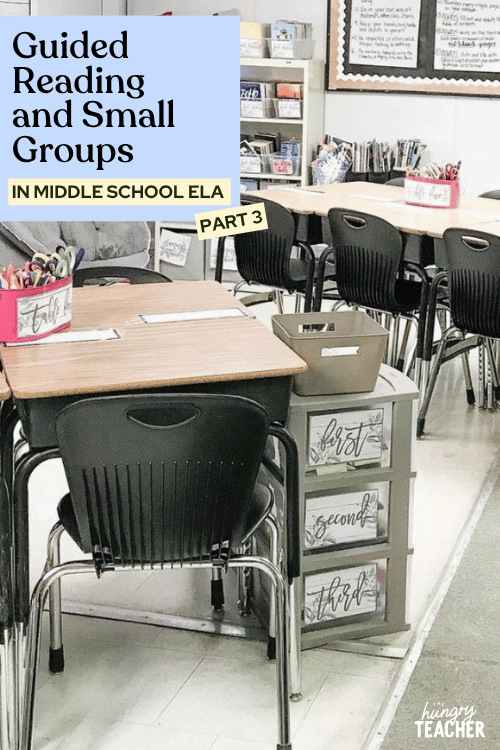
Final Thoughts
If you take one thing from this series, let it be this:
Guided reading and small groups absolutely belong in middle school.
They can coexist beautifully with your curriculum, novel studies, and whole-group lessons when you have the right systems in place.
With structure, routines, and a little flexibility, small groups become the most intentional and impactful part of your ELA block.
Other posts in the small group blog series:
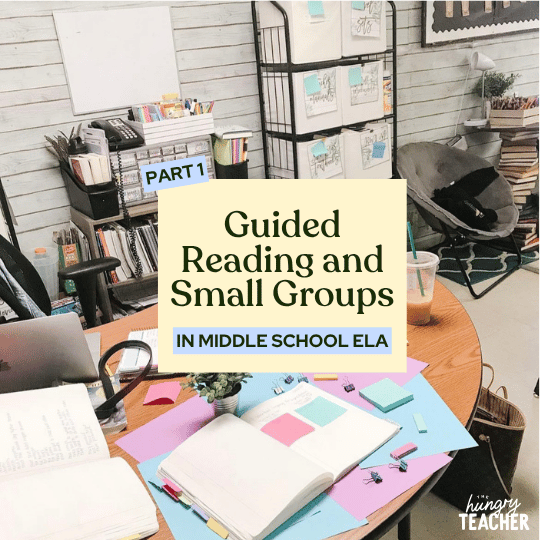

Ready to Simplify Your Small Groups?
Get my free Middle School Guided Reading & Small Groups Toolkit and start organizing your small group time today.
This done-for-you toolkit helps you:
✅ Plan and organize reading and writing small groups that fit into 45–60 minute periods
✅ Track progress without sticky notes or scraps
✅ Keep students on-task with structured rotations
✅ Confidently plan and implement small-group lessons
Want a sneak peek at teaching The Hungry Teacher way—with support, structure, and strategy?
When you join the waitlist for The Hungry Teacher’s Hub membership, you get three free classroom-ready resources: a theme unit, an expository writing unit, and a grammar unit introducing mentor sentences. Plus, you’ll get immediate access to a selection of exclusives from the Hub, including editable sub plans, pacing guides, and more.
No strings attached. Just resources you can use right now—and a heads-up when the Hub opens.
3 Free Middle School ELA Units—yours to keep!
JOIN THE WAITLIST + A FREE GIFT
Where to next, line leader?
Welcome to The Hungry Teacher! We create resources that are easy to use, practical, and get results. Teach with confidence—and make it home before dinner.
xo, the hungry teacher

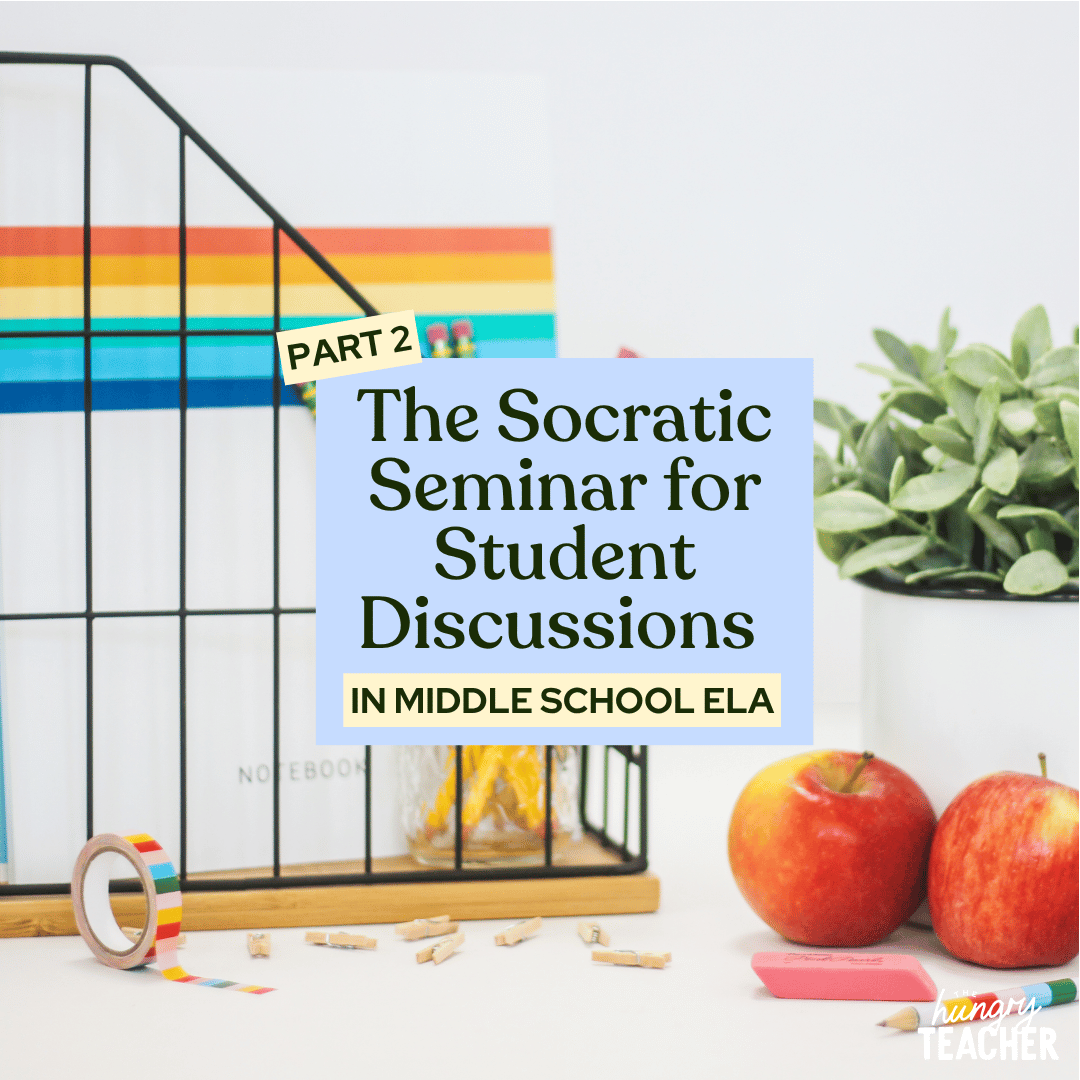

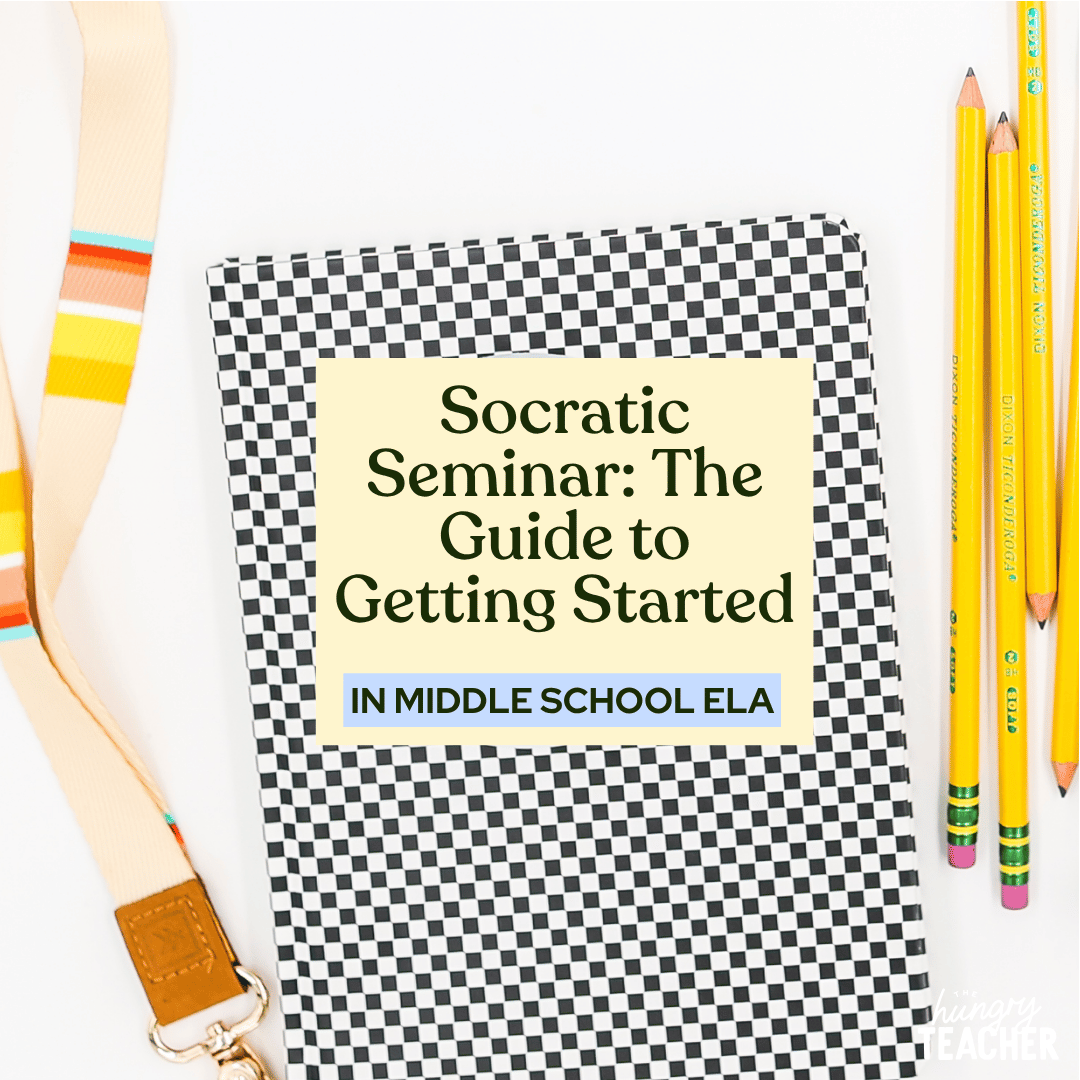
I just read all your posts in this series. So helpful! I am struggling to implement small group and guided reading instruction into my 6th grade classroom. When do you instruct students on specific ELA concepts like plot diagrams or theme? Just as you read the short stories? Also, when do you have time for writing essays or other longer writing assignments? Do you teach that whole group?
I only have a 90 minute, but I want what is best for my kiddos and I don't feel that they are getting that. Just hoping to get some of your insight.
I have this same question!! 🙂 Looks like you posted this back in March though…any updates on what you figured out or decided to do?
Okay…I just read through this whole series and loved it! Like I actually printed it out and annotated it….?! I'm sorry if that's weird. But this is just exactly the kind of info I needed! Your posts and advice are just incredibly reassuring and so so helpful!
I do have the same question as Ali Kitler above though! How do you incorporate all of that type of instruction?
I was also wondering about your novel unit studies. I purchased the whole big bundle and am very excited about it! However, I was wondering how you handle student copies of the novels? I just bought a class set of Freak the Mighty from thriftbooks.com that I'll just have the kids leave in their cubbies for my kids in my other two classes, but I don't think I can afford class sets of all the other wonderful novels in your units! Does your district/school purchase your novels? Do you have the kids buy them (I used to do that at a private school I previously taught at)? Do the kids not have copies?
But seriously, thank you so so much for this 3-part series! It has become my teaching bible I think. I also think you're my spirit animal….
I LOVE this series AND I already own all of the resources you highlighted!!! So exciting!!!! I also have the same questions, but I am thinking that I would teach a separate 20-30 minute writing instruction lesson.
was there a reply to Alie Kitler question? I also teach six grade, and i feel like I am not helping my students. I am coming from third grade.
Loved your posts about organization and went on to read all your other posts, which were fabulous. Anyway…I had a question…so during your ELA block you teach from the required curriculum, a novel study on top of that, and the students are also reading another book for their Literature Circle groups?
How do you determine your Essential Questions for the Collections lesson? Is it given by the curriculum, or do you develop them yourself?